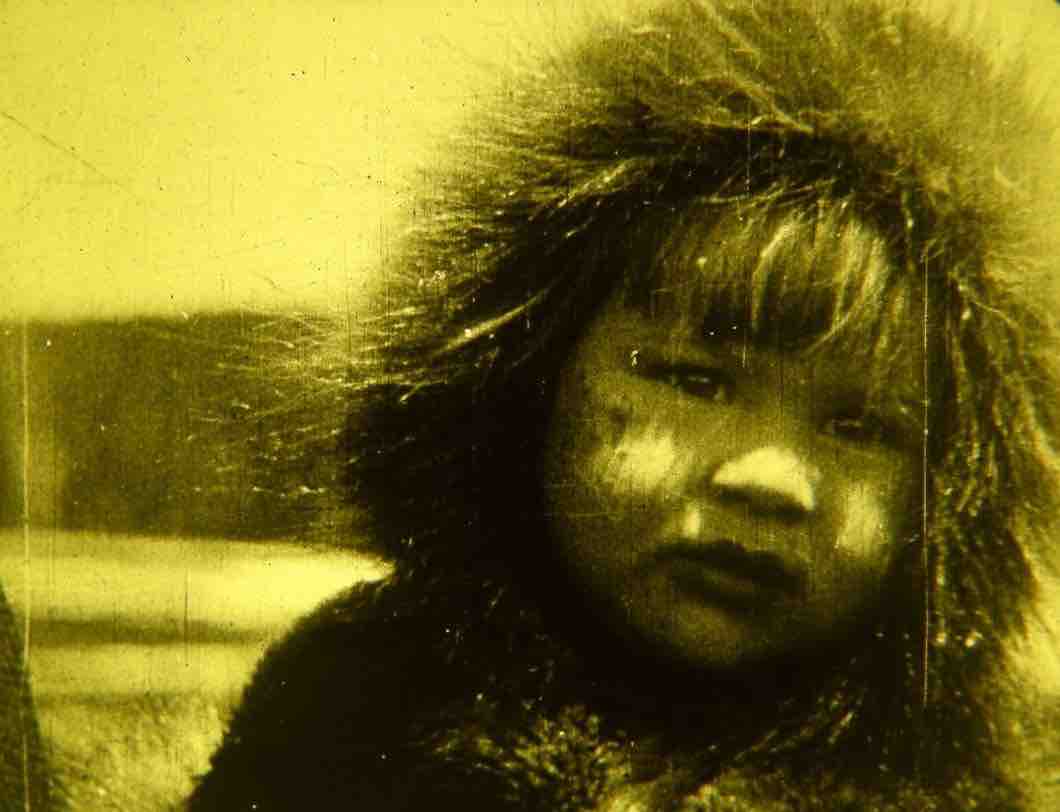CAPTAIN F.E. KLEINSCHMIDT’S ARCTIC HUNT
Frank E. Kleinschmidt (US 1914)
Between 1911 and 1913 Frank Kleinschmidt (1871-1949) shot some of the oldest surviving scenes of arctic hunting. The “Captain”, as he liked to be called, was an unusual character. A German immigrant long settled in Alaska, this crusty 40-year-old had little in the way of financial resources but made up for it with the proverbial pioneering spirit. He felt that cinema and photography were modern man’s way to find “a new zest and interest in the call of the wild”.
The first step in pursuit of his cinematic project was to set sail in the North Sea in the company of a fur trader, following which he re-invented himself as a tour operator for rich hunters looking for new adventures. He took them on an expedition lasting several months, taking advantage of breaks in the hunting to shoot his films. After the expedition Marshall Scull, one of his hunting clients, provided a portrait of Kleinschmidt that could have come from a Jack London novel: a denizen of the icy landscapes with his camera and rifle always at the ready.
On the screen the northern landscape creates a suspended atmosphere, heightened by the film’s monochrome tinting, and even the technical shortcomings caused by practical filming difficulties (loss of focus, oscillation, continuity jumps). Reels of film could freeze, the close-range filming of a bear might come at a very high cost, and finding a stable base for the tripod was no easy task.
The flat, harsh stretches of rock and ice have a timeless quality. The historical dimension of the pictures comes from the human presence in them: Kleinschmidt in his fur coat, a laughing Eskimo boy, a woman standing on a rock as she photographs the sea. Above all, the film provides a visual equivalent to the violence that man’s “civilizing” actions suddenly bring to the natural world, through hunting. Herds of immobile walruses disperse in a second following a rifle shot; the antlers of a moose which shortly before was swimming in a river are hoisted onto a hunter’s shoulders; a bear cub looks for a sign of life from his mother, who is lying dead on the ground.
The film was used in educational shows staged in the auditorium at the Carnegie Museum of Natural History in Pittsburgh. This innovative method of public communication was highly successful – Kleinschmidt himself related how the audience would take the side of the fleeing quarry, much preferring scenes featuring live animals to the sight of their stuffed carcasses in dioramas.
The film was also distributed in re-edited and shortened versions, in Europe as well. Luca Comerio knew of it: footage from some key sequences featuring the bear hunt was found in Comerio’s laboratory-archive among the work material for his film Dal Polo all’Equatore by Yervant Gianikian and Angela Ricci Lucchi, who chose to insert these images in their film of the same title in 1987.
Kleinschmidt’s later life was no less adventurous: his World War I documentary War on Three Fronts was released by Selznick Pictures in 1917 (parts of it were used by D.W. Griffith in Hearts of the World). He then worked as a war correspondent, was arrested and imprisoned for espionage, and returned to Alaska to film stories set in the Far North. But by that time his production was overshadowed by Robert Flaherty’s Nanook of the North (1922), a seminal work of unrivalled influence.
The copy being screened at the Giornate is a reconstruction made from a nitrate positive in the Museo Nazionale del Cinema, Turin, incomplete, uncut, and lacking intertitles, and presumably destined for editing for Italian distribution. The intertitles used in this reconstruction, done at the Immagine Ritrovata laboratory in Bologna, were made from a translation of those on the Danish nitrate copy in the Danske Filminstitut, and from external sources. The complex process of identification included vital assistance from James Simard (Alaska State Library) and Angela Schmidt (Alaska Film Archives).
Stella Dagna

regia/dir, photog: Frank E. Kleinschmidt.
prod: Arctic Film Co.
riprese/filmed: 1911-1913.
uscita/rel: 02.1914.
copia/copy: 35mm, 745 m. (orig. 6 rl.), 40′ (16 fps), col. (imbibito e virato/tinted & toned); did./titles: ITA, ENG.
fonte/source: Museo Nazionale del Cinema, Torino.
Restauro/Restored: 2017.


 Italiano
Italiano